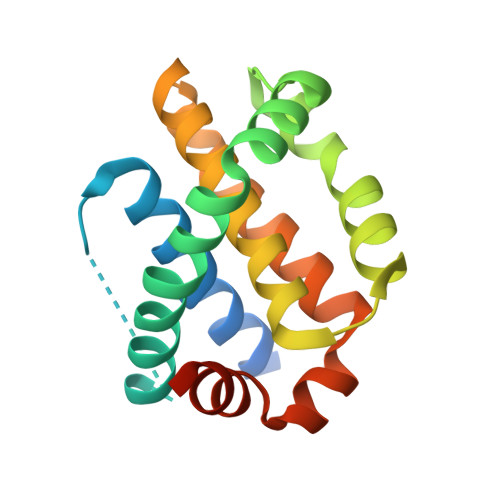Discovery of S64315, a Potent and Selective Mcl-1 Inhibitor.
Szlavik, Z., Csekei, M., Paczal, A., Szabo, Z.B., Sipos, S., Radics, G., Proszenyak, A., Balint, B., Murray, J., Davidson, J., Chen, I., Dokurno, P., Surgenor, A.E., Daniels, Z.M., Hubbard, R.E., Le Toumelin-Braizat, G., Claperon, A., Lysiak-Auvity, G., Girard, A.M., Bruno, A., Chanrion, M., Colland, F., Maragno, A.L., Demarles, D., Geneste, O., Kotschy, A.(2020) J Med Chem 63: 13762-13795
- PubMed: 33146521
- DOI: https://doi.org/10.1021/acs.jmedchem.0c01234
- Primary Citation of Related Structures:
6YBG, 6YBJ, 6YBK, 6YBL - PubMed Abstract:
Myeloid cell leukemia 1 (Mcl-1) has emerged as an attractive target for cancer therapy. It is an antiapoptotic member of the Bcl-2 family of proteins, whose upregulation in human cancers is associated with high tumor grade, poor survival, and resistance to chemotherapy. Here we report the discovery of our clinical candidate S64315, a selective small molecule inhibitor of Mcl-1. Starting from a fragment derived lead compound, we have conducted structure guided optimization that has led to a significant (3 log) improvement of target affinity as well as cellular potency. The presence of hindered rotation along a biaryl axis has conferred high selectivity to the compounds against other members of the Bcl-2 family. During optimization, we have also established predictive PD markers of Mcl-1 inhibition and achieved both efficient in vitro cell killing and tumor regression in Mcl-1 dependent cancer models. The preclinical candidate has drug-like properties that have enabled its development and entry into clinical trials.
Organizational Affiliation:
Servier Research Institute of Medicinal Chemistry, Záhony u. 7, H-1031 Budapest, Hungary.
















